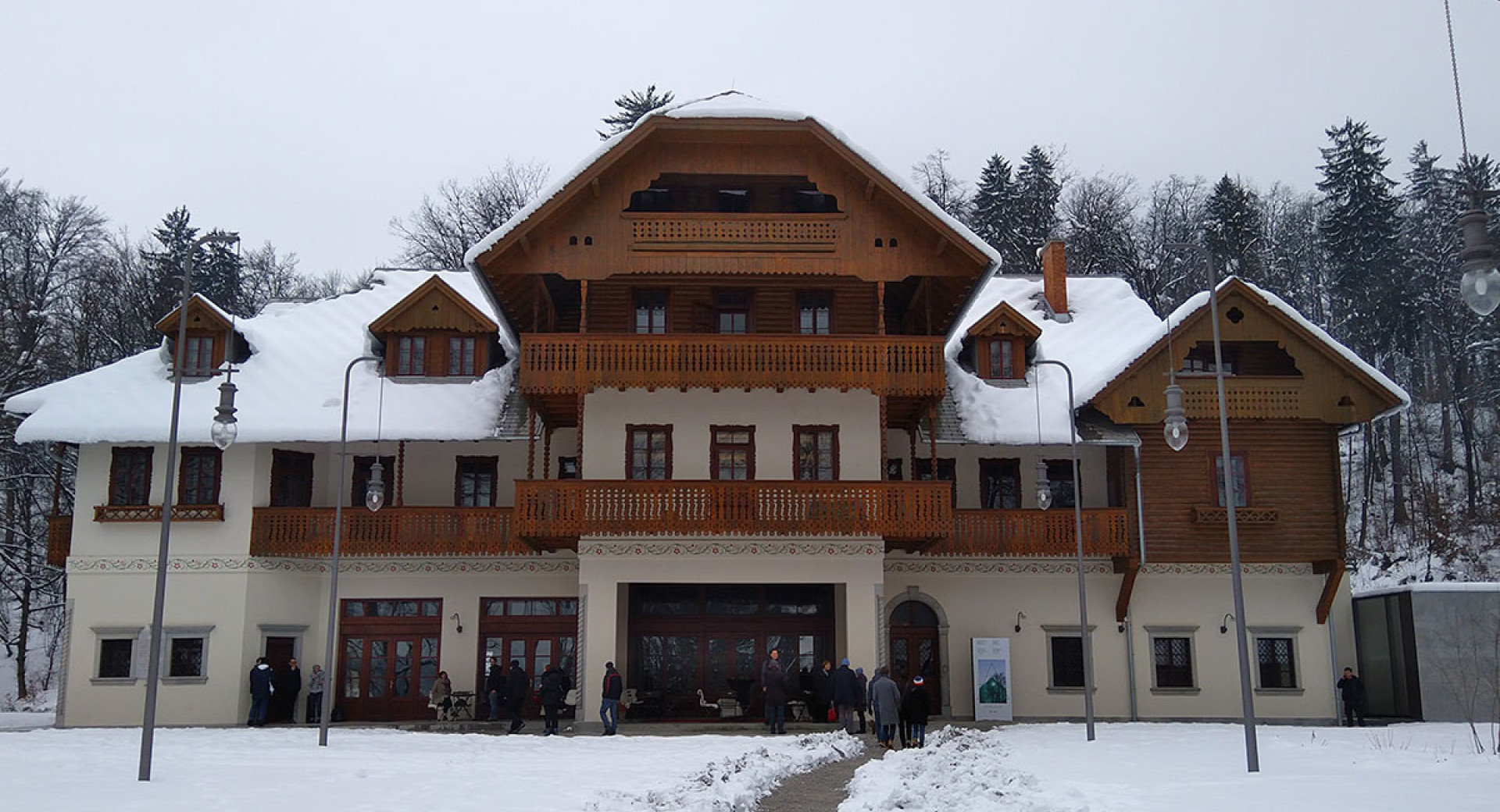Švicarija: art and culture in the heart of Tivoli Park
A centre of Ljubljana’s social scene in the past, recently renovated Švicarija (The Swiss House) has now transformed to a creative centre for artists and art loving community of Ljubljana. Somewhat hidden inside Tivoli Park forest, this alpine style house brings some Gorenjska feel to the city.

A bit of the alpine world in Ljubljana
When you look up while walking along the Jakopič Promenade in Tivoli Park, you spot two large buildings atop a hillside. On the left, International Centre of Graphic Arts and just a stone’s throw away lies Švicarija Cultural Centre, which actually works as an extension of the former. The name Swiss House earned its nickname because of its interesting architectural style, which makes you feel like you’re in the middle of the Julian Alps. Don’t be fooled by the wooden railing on the balcony and the carnation wall paintings, you’re still in Ljubljana, not Switzerland. The renovators tried to preserve as much as possible from the original Švicarija and turned to Slovenian Gorenjska region for inspiration. The wall décor, the tiles, most of them have been restored so you can enjoy a true 19th century experience.
The Swiss house has a long history
The original Švicarija was built in 1835. The wooden house served as a guest house which was later turned into a hotel in 1909. Architect Ciril Metod Koch designed Hotel Tivoli, but the local residents prefer to continue calling it Švicarija. It was immensely popular among the visitors and Ljubljana citizens. Švicarija became the number one gathering spot by hosting many concerts, balls and other events. It was the place to meet and greet, dance the night away or enjoy their proverbially delicious breakfasts. It was a place where local artists gathered and talked art, so did the politicians, but I’m assuming they talked about something else.
After World War II, Švicarija became the hub for many Slovenian artists. There was enough space for studios and they could work their magic in peace, but a renovation was badly needed. And renovated it was. In 2017 our alpine house got a fresh look and is now known as the Švicarija Cultural Centre and became a place for artists and art loving locals once more. It has become a space for creating, exploring and exchange of knowledge. The current multifaceted exhibition Švicarija: Community, Art and Nature takes us through the history of the building, its renovation and the social life inside it.
The art community found a new home
Painters, sculptors and others found their place in upstairs studios, however other visitors and patrons are welcome to visit lower floor rooms, which are reserved for exhibitions, workshops, lectures and so much more. The Stojan Batič Memorial Studio offers visitors a glimpse into the artist’s world and exhibits his numerous sculptures. He was in fact one of the “residents” of the old Švicarija. It is said artist’s studios will open for public from time to time, so visitors could take a peek and possibly buy one or two of their artworks.
Art and food
Of course it’s hard to enjoy art on an empty stomach, so be sure to visit bistro Švicarija, serving typical Slovenian dishes such as jota and apple strudel. Remember, every first Sunday of the month, order brunch and get a guided tour to the exhibition 15% cheaper. The place was also once famous for their delicious coffee, so don’t miss the chance to enjoy a nice cup, whilst sitting in the garden, admiring the remarkable view of the Ljubljana Castle.

